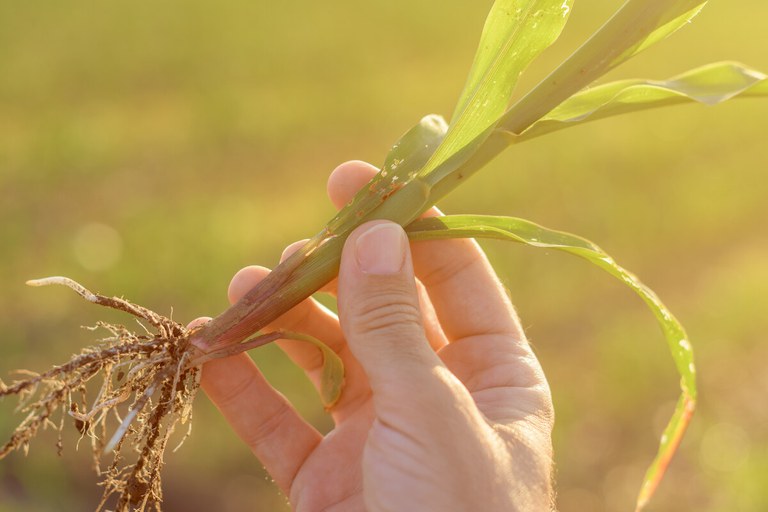Boosting flavonoids in sorghum roots may lead to frost-resistant crops.
Problem
How can farmers battle unpredictable weather patterns to prevent crop loss?
- Sorghum is the fifth most valuable cereal crop globally and can be used for human food, animal feed, and bioenergy. However, even a mild frost can reduce yield and grain quality.
Findings
Earlier research had shown that flavonoids produced by the roots of some sorghum plants allow the plant to adapt and survive when exposed to stresses such as fungi, insect feeding, or frost. Researchers grew selected lines of sorghum to test whether interactions between flavonoids and soil microbes can influence the plant's ability to adapt when it perceives cold or frost above ground.
- Researchers found evidence that plant genetic variation influences root flavonoids as well as the composition of the soil microbial community in the vicinity of the plant roots and that low temperatures affect these relationships.
Impact
The study's findings can lead to developing a frost-resistant line of this crop, reducing the crops' vulnerability and helping to ensure protection from changing weather to maximize farmers' profits.
Research Credit
Team
- Mara Cloutier, Debamalya Chatterjee, Dinakaran Elango, Jin Cui, Mary Ann Bruns, Surinder Chopra
Participating Departments
Partner
Competitive Funding
- USDA NIFA (Sun Grant Program)
- USDA NIFA (AFRI)
- USDA NIFA (Crop Protection and Pest Management)
- Indian Council of Agricultural Research
Federal and State Appropriations
- USDA NIFA Hatch Projects PEN04330, PEN04613, PEN04402, and PEN04571, Accession #0218342, #1010654, #0222582, and #1003346
Emerging Discoveries
Published Research
Sorghum root flavonoid chemistry, cultivar, and frost stress effects on rhizosphere bacteria and fungi.
-
Cloutier, M., Chatterjee, D., Elango, D., Cui, J., Bruns, M. V., & Chopra, S. (2021). Sorghum root flavonoid chemistry, cultivar, and frost stress effects on rhizosphere bacteria and fungi. Phytobiomes Journal, 5(1), 39-50. https://doi.org/10.1094/PBIOMES-01-20-0013-FI
Office for Research and Graduate Education
Address
217 Agricultural Administration BuildingUniversity Park, PA 16802-2600
- Email agresearch@psu.edu
- Office 814-865-3136
Office for Research and Graduate Education
Address
217 Agricultural Administration BuildingUniversity Park, PA 16802-2600
- Email agresearch@psu.edu
- Office 814-865-3136



